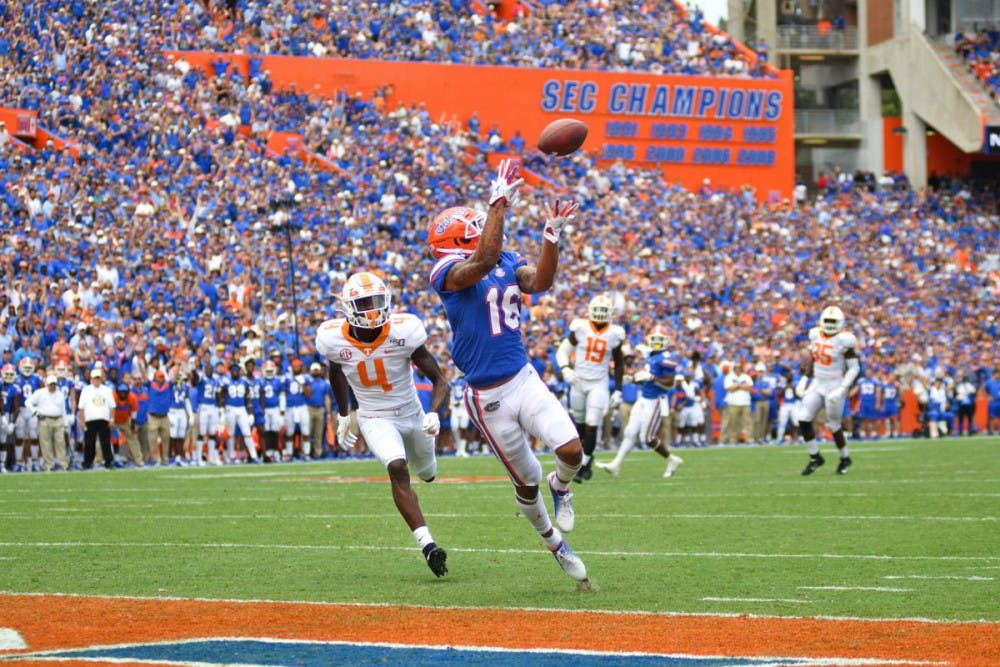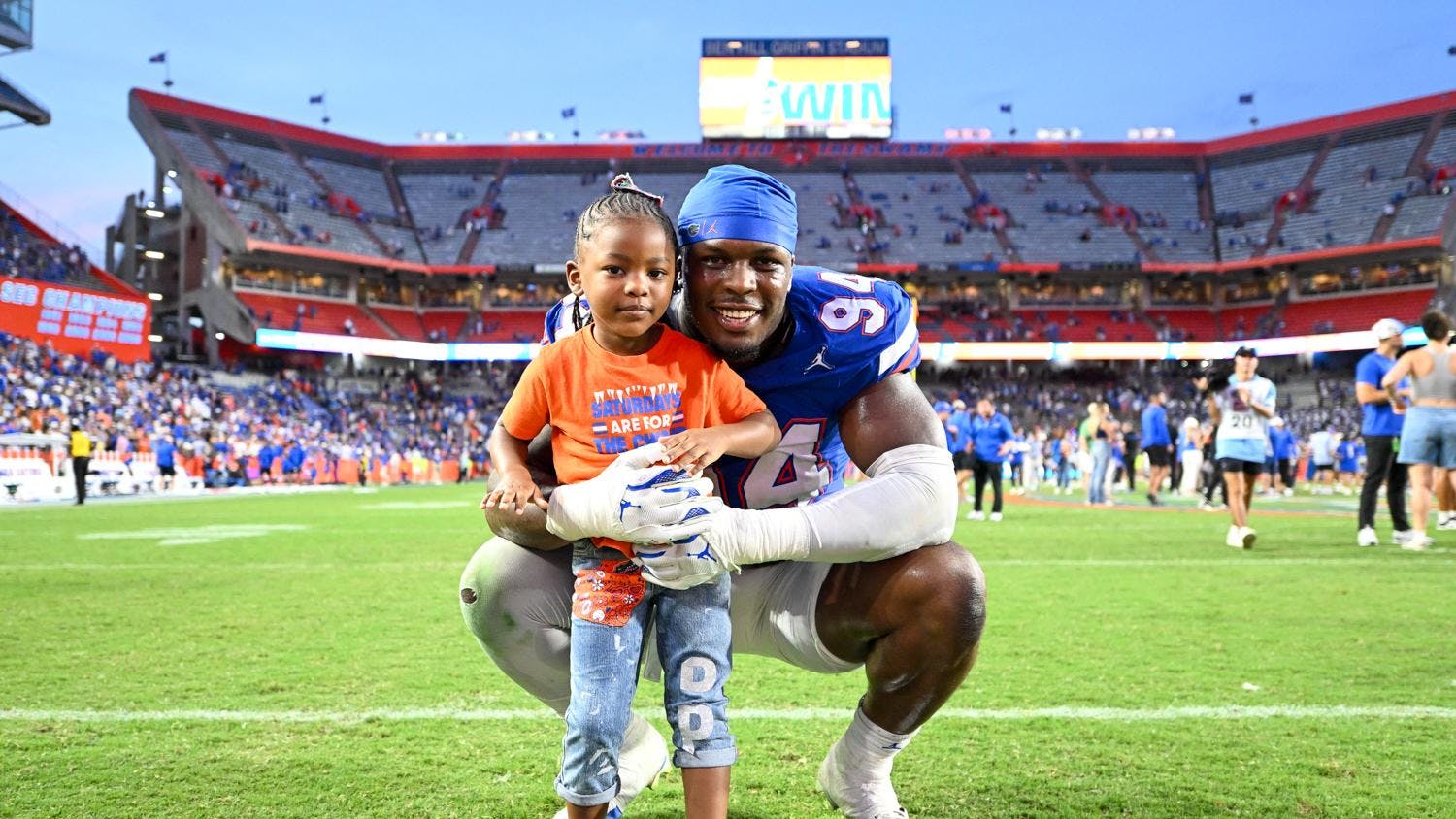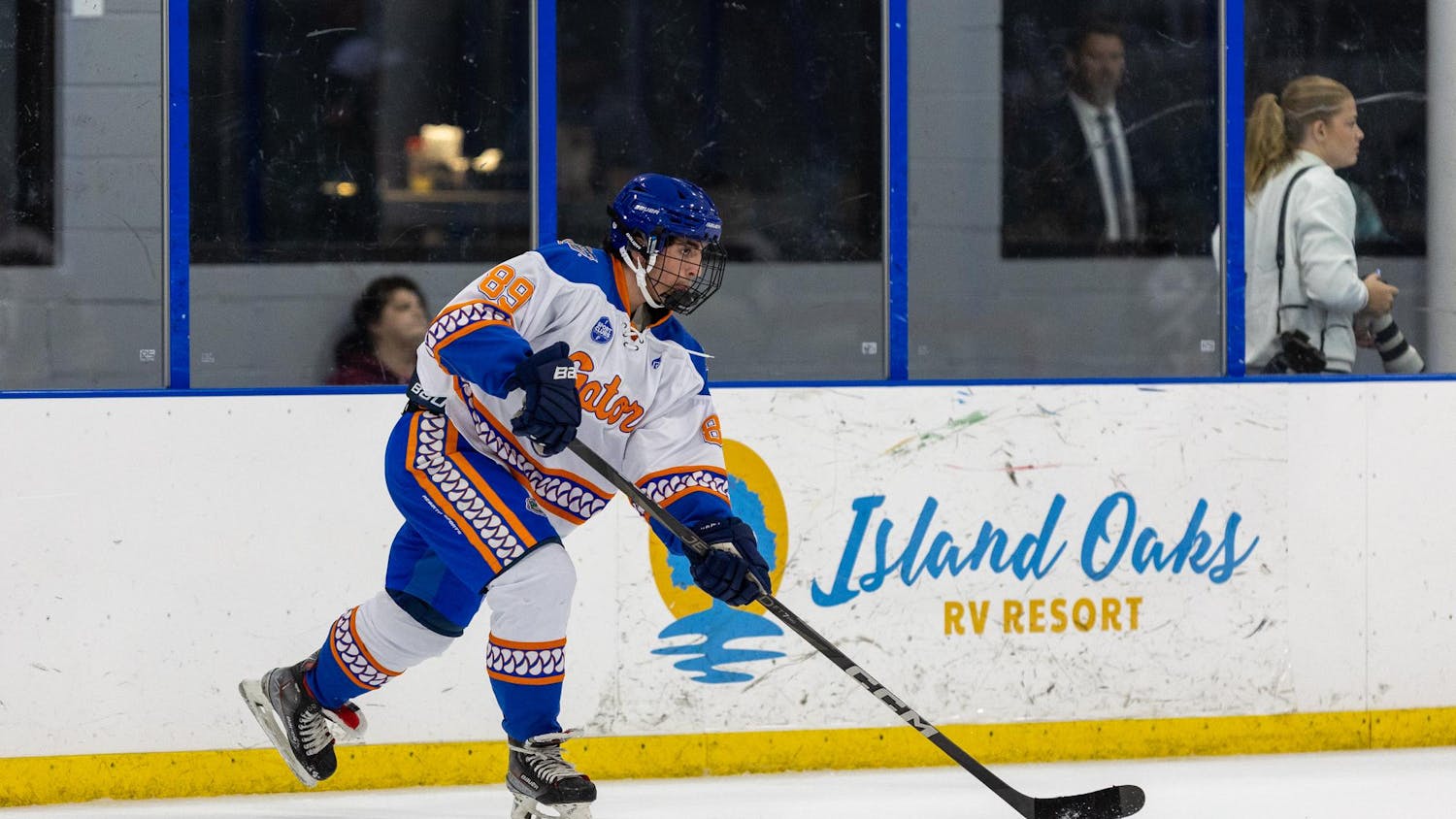There’s a scene from the movie “Moneyball” where then-Oakland Athletic general manager Billy Beane, portrayed by Brad Pitt, is sitting at a table with various scouts discussing how they can replace three key players in slugger Jason Giambi, outfielder Johnny Damon and reliever Jason Isringhausen.
Beane eventually comes to the conclusion that, while they can’t replace those three, they can try to recreate their production.
Coach Dan Mullen and the offensive staff find themselves in a similar position after wide receivers Van Jefferson, Freddie Swain, Tyrie Cleveland and Josh Hammond all graduated. They left behind a wide receiver room full of inexperience and uncertainty, meaning that Mullen and company need to find a way to recreate their production. Throw in the graduation of running back Lamical Perine, and it’s clear that the Gators might be in trouble.
Below is a chart of how much pass-catchers were involved last season using a statistic called pass usage. Essentially, we’re looking at the percentage of plays receivers—I’m counting running backs and tight ends as well here—were targeted on passing plays.
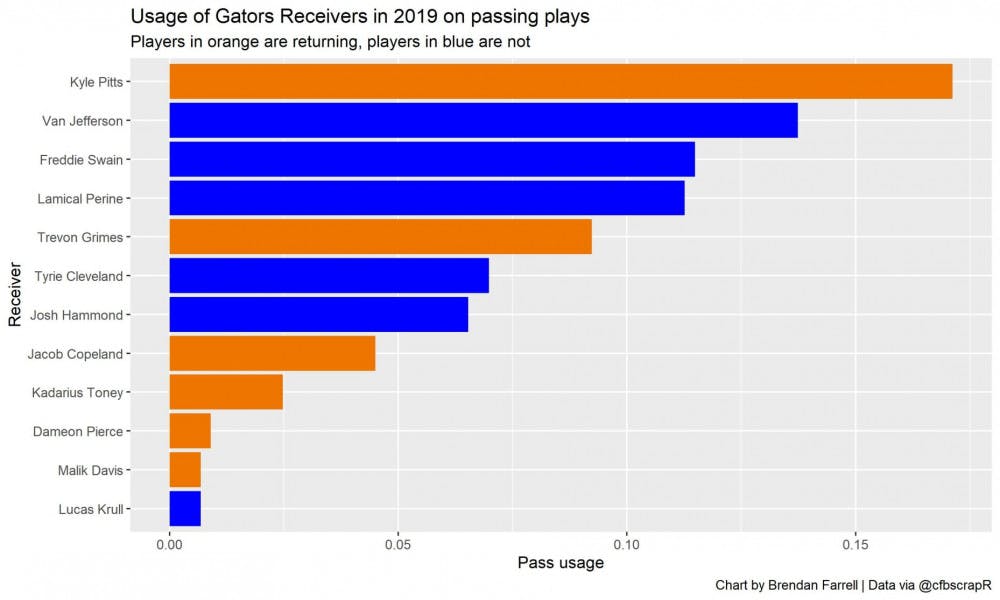
Five of the seven most-involved players in the passing game from last season graduated. The Gators were a receiver-by-committee team last season, with nine players registering at least 150 receiving yards. They won’t have that luxury next season.
How much value do the Gators have to replace? Let’s look at something called Predicted Points Added (PPA), which is very similar to Expected Points Added (EPA). Predicted Points Added is the name of the EPA model collegefootballdata.com uses, and that’s also what I’m going to use.
Think of this as measuring how much of an impact each receiver makes every time he’s targeted.
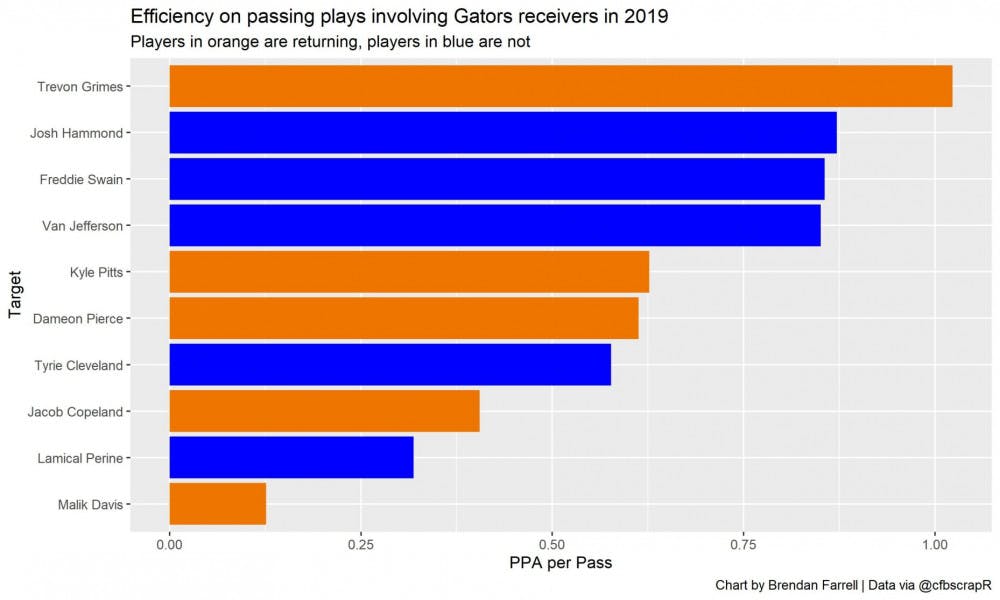
The Gators are losing three of their four most productive receivers according to PPA as well as another fairly productive receiver in Cleveland. That’s not a good sign for quarterbacks Kyle Trask and Emory Jones next season.
However, the good news is that someone like Trevon Grimes could do some serious damage with a bigger role in the offense next season. The 6-foot-5 senior was far and away the Gators’ best receiver by PPA per pass. Grimes painlessly replacing Van Jefferson as the No. 1 receiver seems pretty realistic.
Where UF could run into trouble, however, is who plays behind him.
All eyes are on redshirt sophomore Jacob Copeland to step into the role as the Gators’ No. 2 receiver, who has shown tantalizing abilities but has struggled to find playing time and turn those traits into meaningful production. As the returning wideout with the second-most receiving yards (273), playing time shouldn’t be a problem next season.
The problem is that Trask failed to connect with Copeland last season.
Of the 35 tracked passes that were thrown toward Copeland, he only hauled in 21 of them, a catch rate of just 60 percent. Additionally, Copeland’s PPA per pass was behind running back Dameon Pierce, which isn’t very promising.
Let’s look at some more traditional measures. Here’s a chart showing how many receiving yards came from players who are returning versus those who are no longer with the team. This is out of receivers who had at least 100 receiving yards last season.
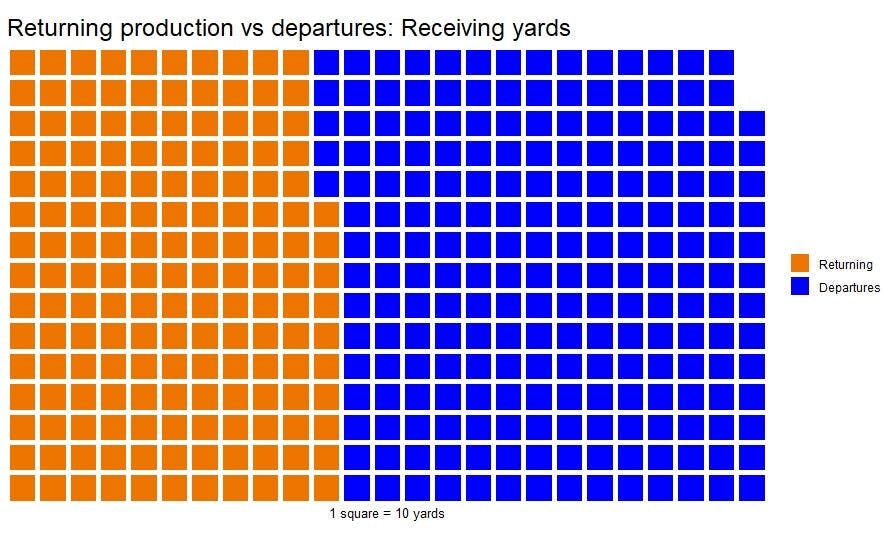
Florida has 2,133 receiving yards to replace from last season, which is a big ask for a relatively inexperienced group.
Let’s take a look at the number of receptions UF will have to replace last season and how many are still on the roster.
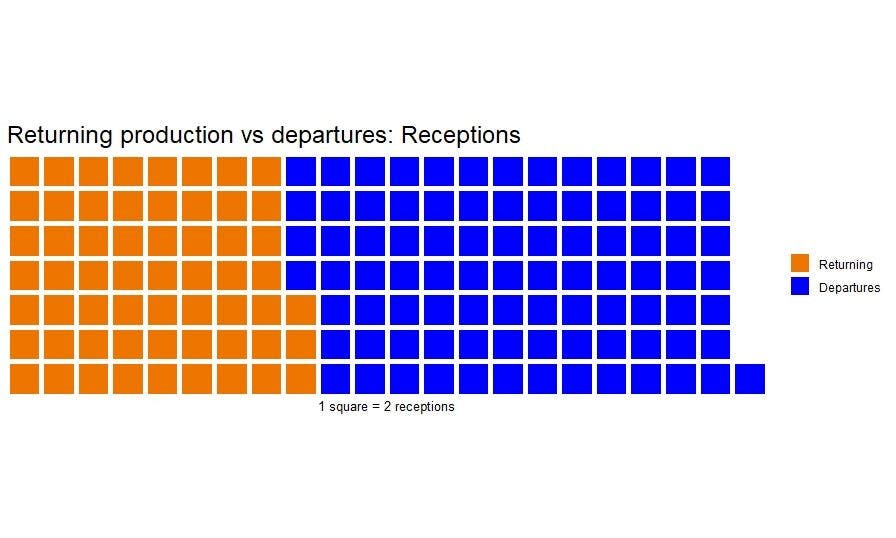
The Gators’ departures also combined for 179 receptions last season. While that may seem like a lot to replace at first, that also means that there’s plenty of playing time up for grabs as well. Additionally, if Florida’s running game bounces back after a brutal season in 2019, that means fewer passes than last season and thus fewer receptions to replace.
But the biggest problem UF might run into is dealing with the inconsistent decision making of the NCAA. Mullen snagged two receivers from the transfer portal this offseason in redshirt sophomore Justin Shorter (Penn State) and Jordan Pouncey (Texas). The issue is that neither are grad transfers, and there is a possibility that both could be ruled ineligible for the 2020 season.
That would make the Gators’ depth behind Grimes and Copeland a major problem considering that the next two guys up could be senior Kadarius Toney, who has logged almost as many carries (47) as receptions (50) in his career, or senior Rick Wells, who has barely played a meaningful down.
From there, it’s a laundry list of freshmen: redshirt freshmen Trent Whittemore and Ja’Markis Weston and four-star true freshmen Xzavier Henderson and Jaquavion Fraziars.
Tight end Kyle Pitts, though, is arguably one of the best in college football right now and presents a matchup nightmare for opposing defenses. Yet, much like at wide receiver, UF’s depth at the position is redshirt junior Kemore Gamble (nine receptions in three seasons), sophomore Keon Zipperer (three catches for 31 yards last season), redshirt sophomore Dante Lang and freshman Jonathan Odom. If Pitts picks up an injury or a younger player like Zipperer doesn’t step up, Trask could be running out of dependable targets.
Florida was fortunate to return its starting quarterback and much of its offensive line from last season, a luxury that most of its SEC competition doesn’t have. Looking at Bill Connelly’s returning production metric on ESPN, Florida sat at 61st on offense in February, likely because 32 percent of the formula is based on returning pass-catchers.
The Gators will have a lot that works to their advantage in 2020, like being two-deep at quarterback, facing a fairly easy schedule and having just two opponents with more returning production (FSU and Tennessee). But the losses at the wide receiver position are a legitimate concern and could be an obstacle for UF against teams with stiffer secondaries like Georgia.
Follow Brendan on Twitter @Bfarrell727 and contact him at bfarrell@alligator.org.


